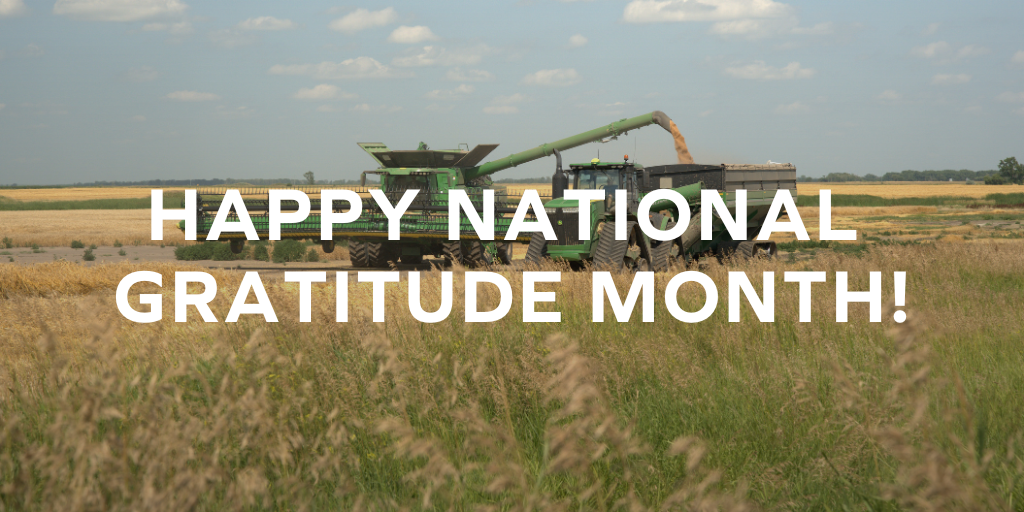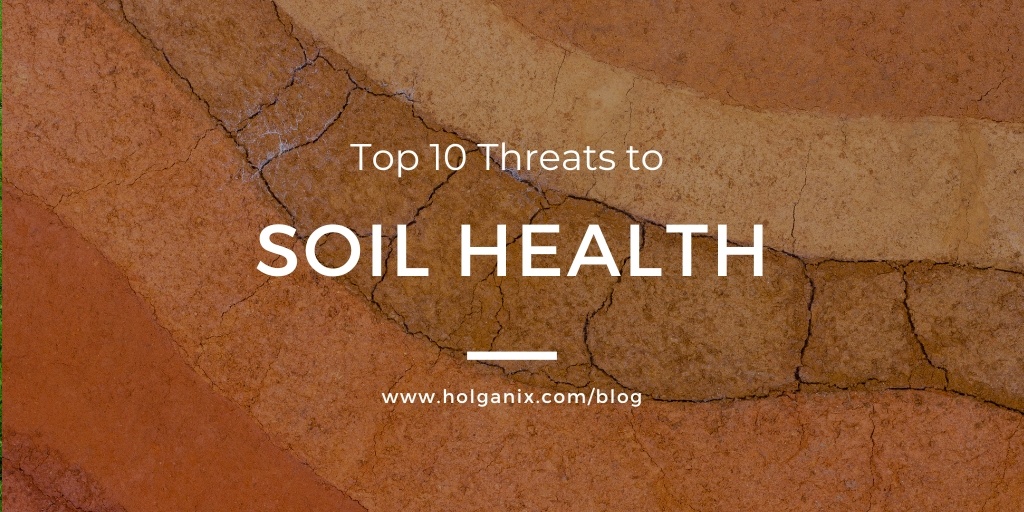.jpg?width=1024&height=512&name=Blog%20headers%20%232%20(90).jpg) Are crop residue problems holding you back? Ready to boost your soil health and maximize planter performance?
Are crop residue problems holding you back? Ready to boost your soil health and maximize planter performance?
Crop residue management is a critical practice for sustainable agriculture, particularly in no-till farming systems. Residue from previous crops, such as stalks, leaves, and roots, plays a significant role in maintaining soil health, improving water retention, and reducing erosion. However, the breakdown of this residue is essential to unlock its full benefits, and this process is primarily driven by the diverse community of soil microbes.
Earlier this July, No-Till Farmer's Associate Editor for Conservation Agriculture, Mackane Vogel, sat down with Holganix President of Agriculture, David Stark Ph.D., to discuss how soil microbes break down crop residue. This session features newly updated content and the latest data from recent field studies, offering fresh insights and actionable strategies for your farm.
In this blog, we will discuss the following:
- The benefits of leaving residue on the field.
- Striking a balance and the threat of having too much crop residue.
- The factors that contribute to the decomposition of crop residue.
- How Holganix Bio 800+ Breakdown work?
Watch the Full Video interview
Discover the key takeaways from the insightful discussion on crop residue from No-Till Farmer in this blog. For a more in-depth look, don't miss the opportunity to watch the initial 30 minutes of the video interview below. If you're reading this post via email, simply click here to view the video.
Why should you leave residue on the field?
From building soil health, to protecting your fertilizer investment, to providing an additional monetary value, there are a lot of reasons why you should leave residue on your fields.
- Building soil health - Keeping your soil covered is critical to maintaining and building soil health. Specifically, it reduces runoff and soil loss, conserves soil moisture, increases organic matter, and improves soil structure. “But also, all that crop residue is food for microbes,” explains Dave Stark. “The microbes will take that food and use it to cycle nutrients and build soil health.”
- Cycling nutrients - "We also know that there are a lot of nutrients tied up in crop residue,” states Dave. “For example, in one ton of corn crop residue, there is, on average 17 pounds of nitrogen, 4 pounds of phosphorus, 34 pounds of potassium, and 3 pounds of sulfur. You generate about a ton of crop residue for every 44 bushels of corn. That’s a lot of nutrients to add back to your farm.”
- Providing an additional monetary value - Crop residue can also be harvested and used as an energy source, fiber source, feed, etc.
Striking the balance and the threat of having too much residue
If you lose too much residue, your land can suffer from erosion problems, crusting when it rains, and, over time, would decrease the value of your soil. However, too much residue can also cause problems. Farm equipment can jam, seed placement and emergence are affected, and soil temperature is affected.
“Uneven emergence of your crop can cost you in yield at the end of the season,” explains Dave. “What we want is to be able to keep residue on the field, but to control it, and not have it cause any problems come spring.”
The factors that contribute to decomposition of residue
How do you decompose crop residue? Crop residue decomposes when you have healthy microbial activity in the soil. Below are three key methods that can ensure you are promoting the microbial activity needed to decompose crop residue.
- Equipment - The more you can chop up or crush the residue, the easier it will be for the microbes to enter the holes within the crop residue.
- Feeding the microbes – Some products that are used in the fall for crop debris degradation provide food for microbes. “That’s not a bad thing,” reminds Dave Stark. “But, it is an assumption that you have all the right microbial species that you need in your soil.”
- Applying a microbial inoculant – Adding microbes that are focused on degrading lignin, pectin and hemi-cellulose will boost populations in the soil and hasten crop decomposition. “Scientifically speaking,” explains Dave, “this comes down to primarily fungi and protozoa.”
How Does Holganix Bio 800+ Breakdown work?
Holganix Bio 800+ Breakdown charges soil with a consortium of over 800 species of soil microbes, nitrogen, and microbe food. This is a tremendous tool to support the cover crops practice and accelerate its benefits. These microbes have heightened species that play a special role in crop residue breakdown – both the breakdown of the shoots above the soil, and the roots below the soil. The breakdown of the residue releases nutrients and water to the soil. Plus, using Holganix Bio 800+ Breakdown on any fall planted cover crops through residue, will also improve emergence and stand establishment.
Specifically, as it pertains to cover crops, Bio 800+ Breakdown provides the following benefits:
- Unlocks nutrients through nutrient sequestration and through the breakdown of residue.
- Increases yield and overall crop quality.
- Builds soil structure by improving soil aggregation and promoting root growth.
- Promotes robust root development which reduces erosion.
- Enhancing water quality by enhancing soil structure and improving organic matter, ultimately reducing runoff and nutrients leaching into waterways.
Watch this 3.5-minute video explanation from David Stark, Ph.D., Holganix President of Agriculture. If you are reading this blog via email, click here to access the video.
Want to Learn More?
Are you interested in learning more about how Holganix Bio 800+ Breakdown helps break down your crop residue and enhance your fertilizer investment? Schedule a 15-min call with our soil health experts.
 |
August 15, 2024
|
1:00 PM
|
August 15, 2024
|
1:00 PM



.jpg?width=1024&height=512&name=Blog%20headers%20%232%20(90).jpg)

-1.jpg)
-1.jpg)
-1.jpg)
.jpg)

.jpg)
.webp)
-1%20(1).webp)
-831535-2.webp)



.jpg)
.jpg)

